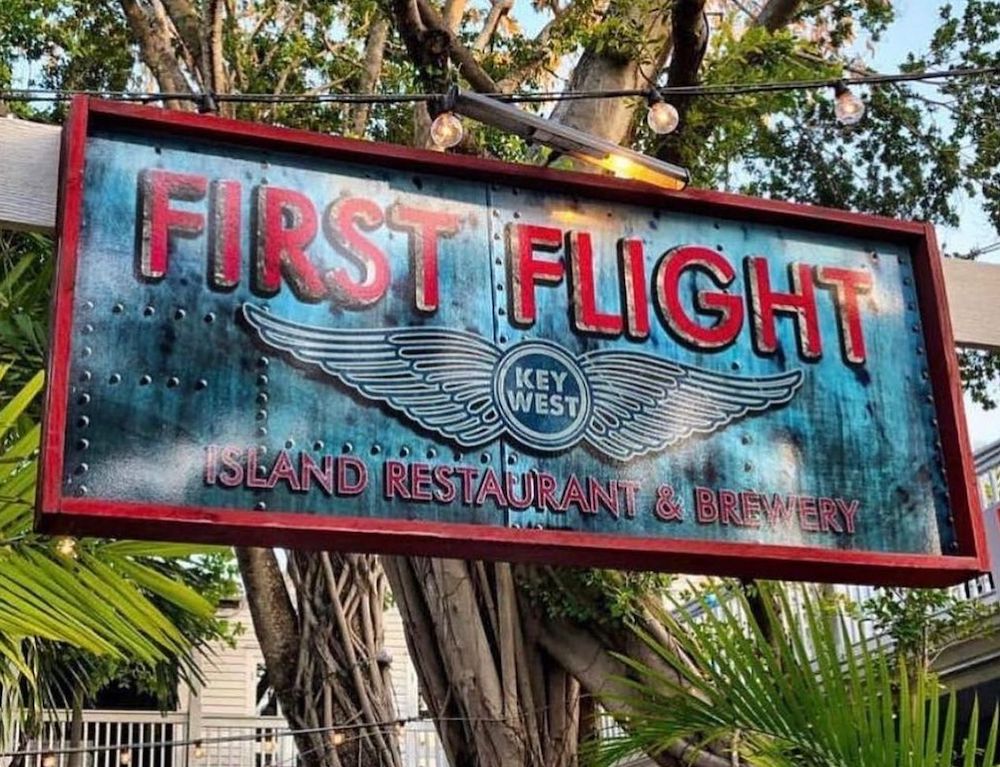With the Key West airport’s expansion underway and direct flights available from a notable roster of major cities, the future of air travel on the island seems assured. However, Key West’s role in air travel’s past is equally important.
In 1927, the island was the birthplace of one-time aviation giant Pan American Airlines. And its aviation history dates back even farther than that — to an enterprise called Aeromarine Airways.
In 1920, Aeromarine began America’s first official international airmail service, between Key West and Havana, using F5L “flying boats” bought from the U.S. Navy. Among them were the Nina, Pinta and Santa Maria.

After beginning America’s first official international airmail service, Aeromarine Airways inaugurated the first scheduled international passenger service — flying between Key West and Havana.
The “flying boats” traveled approximately 70 miles per hour and could reach Cuba in just over 60 minutes. Aeromarine also inaugurated America’s first scheduled international passenger service — and strangely enough, passengers and sacks of mail were charged the same fare for the trip.
In those days, radio sets could weigh more than half a ton and were hardly aviation-friendly, so carrier pigeons were used by Aeromarine pilots to carry messages during their flights. Rumors persist that the airline also had another use for the pigeons: if a flyer lost his bearings, he would just release a bird and follow it home to Key West.
Pan Am may have avoided pigeons, but its first international flight was as unusual as anything ever attempted by Aeromarine. The airline was the brainchild of Juan Trippe — who, during a chancy flight to Cuba in 1925, had obtained a letter guaranteeing him airplane landing rights in the country.
That letter proved to be a gold mine. By Oct. 11, 1927, Trippe’s fledgling Pan American Airways had been awarded an all-important contract with the United States Post Office to deliver mail between Key West and Havana.
Unfortunately, the contract required the airline to deliver the first load of letters by Oct. 19, and Pan American had serious problems: no plane, for one thing, and not much of an airport in Key West.

Pan Am’s first official flight, launching the airline that became an aviation giant, took place between Key West and Havana in October 1927. (Photo courtesy of Stephen Floyd Whalton)
The planes, Fokker trimotors ordered more than 18 months before, had not arrived. The Key West “airport” was simply a boulder-filled field with two dirt runways virtually swamped by a two-day rainstorm.
By Oct. 18, time had run out. If the sacks of mail weren’t flown to Cuba the next day, the contract was void and Pan American was doomed.
Luckily, that day a barnstormer named Cy Caldwell landed his single-engine seaplane in Miami for repairs. There a friend of Pan Am’s manager, aware of the desperate situation, made a desperate request: could Caldwell fly to Cuba with the mail?
Caldwell could. By dawn on Oct. 19, he and his seaplane were in Key West to receive seven sacks of mail holding approximately 30,000 letters. At 8:04 a.m., Caldwell took off — landing in Havana with the mail about an hour before the cable from Key West arrived announcing his departure. With its first “official” flight completed, Pan Am was in business.
Today, the relocated building that housed Pan Am’s ticket office on the Key West waterfront (and also Aeromarine’s headquarters) is part of First Flight Island Restaurant & Brewery at the corner of Whitehead and Caroline streets. The popular indoor-outdoor emporium is decorated with Key West aviation memorabilia — and salutes its heritage each New Year’s Eve, when (in an offbeat takeoff on New York City’s Times Square “ball drop”), revelers applaud the midnight “landing” of a flight attendant in a section of a replica aircraft.
These days, air travel is nearly as common as breathing, modern navigational aids have replaced pigeons, and the legendary Pan Am is defunct. Key West’s place in aviation history, however, remains secure — a colorful and celebrated part of the island’s 200-year heritage.

